Transistor Amplifier Oscillator and Wave Shaping Circuit | ट्रांजिस्टर एम्पलीफायर ऑसिलेटर और वेव शेपिंग सर्किट
START QUIZ पर क्लिक करें और अपना Test पूरा करें
Q1. What is the name of the circuit that shifts the waveform upward or downward without disturbing its shape? / उस सर्किट का क्या नाम है जो तरंग को ऊपर या नीचे की ओर मोड़ता है, बिना उसकी आकृति को विचलित किए?

Q2. Why NPN type of transistors are preferred over the PNP type transistors? / PNP प्रकार के ट्रांजिस्टर पर NPN प्रकार के ट्रांजिस्टर को क्यों पसंद किया जाता है?
Q3. What is the name of capacitors C₁ and C₂ in the circuit? / सर्किट में कैपेसिटर C₁ और C₂ का क्या नाम है?

Q4. Which type of amplifier configuration used in the circuit? / सर्किट में किस प्रकार के एम्पलीफायर कॉन्फ़िगरेशन का उपयोग किया जाता है?

Q5. What is the voltage gain in a transistor if the input voltage is 40mV and the output voltage is 3.6V? / यदि इनपुट वोल्टेज 40mV है और आउटपुट वोल्टेज 3.6V है तो ट्रांजिस्टर में वोल्टेज गेन क्या है?
Q6.What is the name of circuit? / सर्किट का नाम क्या है?

Q7. Which circuits commonly use parallel-fed hartley oscillators? / कौन से सर्किट आमतौर पर पेरललेल फेड हार्लेट ऑसिलेटर्स का उपयोग करते हैं?
Q8. Which is the transistor used to operate the colpitts oscillator? / कोलीपिटस ऑसिलेटर को संचालित करने के लिए किस ट्रांजिस्टर का उपयोग किया जाता है?
Q9. What type of feed back is used by the wein-bridge oscillator to oscillate the signal? / वेन-ब्रिज ऑसिलेटर द्वारा सिग्नल को आसलेट करने के लिए किस प्रकार के फीड बैक का उपयोग किया जाता है?
Q10. What is the type of amplifier configuration? / एम्पलीफायर कॉन्फ़िगरेशन का प्रकार क्या है?

Q11. Which application the clamper circuit is used in electronics? / इलेक्ट्रॉनिक्स में क्लैपर सर्किट का उपयोग किस एप्लिकेशन में किया जाता है?
Q12. How the maximum permissible voltage that can be applied across the collector – Emitter junction of a transistor is indicated? / अधिकतम पारगम्य वोल्टेज जिसे कलेक्टर में लागू किया जा सकता है - एक ट्रांजिस्टर के एमिटर जंक्शन को कैसे इंगित किया जाता है?
Q13. What is the resonant frequency range of a crystal? / एक क्रिस्टल की गुंजयमान आवृत्ति रेंज क्या है?
Q14. How does the values of bias resistors selected for collector current in class -B amplifiers? / वर्ग-B एम्पलीफायरों में कलेक्टर वर्तमान के लिए बायस प्रतिरोधों के मूल्यों को कैसे चुना जाता है?
Q15. Which type of circuit is used? / किस प्रकार के सर्किट का उपयोग किया जाता है?

Q16. What type of arrangement is required to sustain the oscillations of the oscillator circuit? / ऑसिलेटर्स सर्किट के ऑस्कीलेसन को बनाए रखने के लिए किस प्रकार की व्यवस्था की आवश्यकता है?
Q17. Which type of transistors are required to amplify signals from the microphone /transducer? / माइक्रोफोन/ट्रांसड्यूसर से संकेतों को बढ़ाने के लिए किस प्रकार के ट्रांजिस्टर की आवश्यकता होती है?
Q18. Why transistors made of silicon is preferred over the germanium semiconductor material? / जर्मेनियम सेमीकंडक्टर सामग्री पर सिलिकॉन से बने ट्रांजिस्टर को क्यों पसंद किया जाता है?
Q19. What is the efficiency of transformer coupled class A amplifier? / ट्रांसफार्मर कपल्ड क्लास A एम्पलीफायर की दक्षता क्या है?
Q20. What is the current gain of common collector amplifier? / आम कलेक्टर एम्पलीफायर का वर्तमान लाभ क्या है?
Q21. Which circuit is used to clip portion of both positive and negative half cycle of input signal voltage? / इनपुट सिग्नल वोल्टेज के सकारात्मक और नकारात्मक दोनों चक्र के भाग को क्लिप करने के लिए किस सर्किट का उपयोग किया जाता है?
Q22. What is the formula used to calculate the current gain (α) of common base amplifier? / सामान्य आधार एम्पलीफायर के वर्तमान लाभ (α) की गणना करने के लिए उपयोग किया जाने वाला सूत्र क्या है?
Q23. What is the frequency of operation of the amplifier circuit using inductance and capacitance (L-C) coupling? / अधिष्ठापन और समाई (L-C) युग्मन का उपयोग करके एम्पलीफायर सर्किट के संचालन की आवृत्ति क्या है?
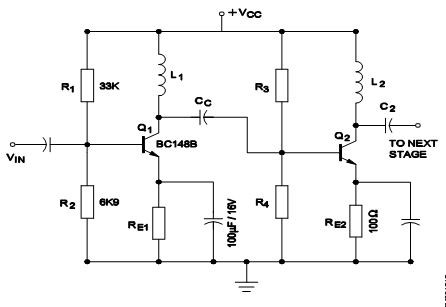
Q24.Which parameter of passive component can be calculated using the formula / निष्क्रिय घटक के किस पैरामीटर की गणना सूत्र का उपयोग करके की जा सकती है

Q25. Which methods of coupling used in the transistor amplifier circuit shown? / दिखाए गए ट्रांज़िस्टर्ड एम्पलीफायर सर्किट में इस्तेमाल किए गए युग्मन के कौन से तरीके हैं?

Q26. What is the function of the circuit diagram? / सर्किट आरेख का कार्य क्या है?
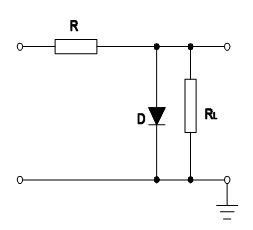
Q27. What is the input impedance of darlington pair transistors? / डार्लिंगटन जोड़ी ट्रांजिस्टर का इनपुट इम्पीड़ेंस क्या है?
Q28. What is the maximum emitter to base voltage VEB (max) for the transistor BC 147? / ट्रांजिस्टर BC 147 के लिए बेस वोल्टेज VEB (max) का अधिकतम उत्सर्जक क्या है?
Q29. What is full form of UTP in schmitt trigger? / schmitt ट्रिगर में UTP का पूर्ण रूप क्या है?
Q30. How many time constant period is required to fully charge a capacitor? / एक संधारित्र को पूरी तरह से चार्ज करने के लिए कितने समय की निरंतर अवधि की आवश्यकता होती है?
Q31. What type of packaging is generally used to transistors utilized for low power amplification? / निम्न शक्ति प्रवर्धन के लिए आमतौर पर उपयोग किए जाने वाले ट्रांजिस्टर को किस प्रकार की पैकेजिंग का उपयोग किया जाता है?
Q32. Which type of amplifier has the frequency response curve is shown below? / किस प्रकार के एम्पलीफायर में फ्रीक्वेंसी रिस्पांस कर्व नीचे दिखाया गया है?

Q33. Name the circuit diagram. / सर्किट आरेख का नाम बताएं?

Q34.What is the natural shape of a quartz crystal? / एक क्वार्ट्ज क्रिस्टल का प्राकृतिक आकार क्या है?
Q35. What is the name of multi-stage amplifiers of similar configuration? / सिमिलर कॉन्फ़िगरेशन के मल्टी-स्टेज एम्पलीफायर का नाम क्या है?
Q36. Which type of amplifier is used to operate the loud speaker? / लाउड स्पीकर को संचालित करने के लिए किस प्रकार के एम्पलीफायर का उपयोग किया जाता है?
Q37. What are the basic components required for a clipping circuit? / क्लिपिंग सर्किट के लिए आवश्यक बुनियादी घटक क्या हैं?
Q38. What type of waveform is produced by the series fed hartley oscillator? / श्रृंखला खिलाया हार्लेट ऑसिलेटर्स किस प्रकार की तरंग द्वारा निर्मित होता है?
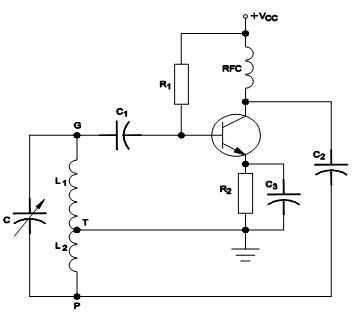
Q39. What is the difference of colpitts oscillator compare to hartley oscillator? / कोलेटिट्स ऑसिलेटर का अंतर हर्टली ऑसिलेटर की तुलना में क्या है?
Q40. How to improve the frequency stability in oscillator circuits? / कैसे ऑसिलेटर सर्किट में आवृत्ति की स्थिरता में सुधार करने के लिए?
Q41. What is the advantage of using bias in transistor circuits? / ट्रांजिस्टर सर्किट में बायस का उपयोग करने का क्या फायदा है?
Q42. What is the purpose of using positive feedback in amplifiers? / एम्पलीफायरों में सकारात्मक फीड बैक का उपयोग करने का उद्देश्य क्या है?
Q43. What is the electrode marked ‘X’ in the TO-5 transistor pack diagram? / TO-5 ट्रांजिस्टर पैक आरेख में इलेक्ट्रोड को in X ’के रूप में चिह्नित किया गया है?
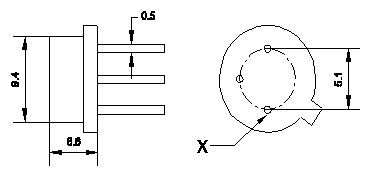
Q44. What is the meaning of first letter indicated in the transistor code number BC 107? / ट्रांजिस्टर कोड संख्या BC 107 में इंगित पहले अक्षर का अर्थ क्या है?
Q45. Which coding system for transistor type numbering system is followed by American standard? / ट्रांजिस्टर टाइप नंबरिंग प्रणाली के लिए कौन सी कोडिंग प्रणाली अमेरिकी स्टैण्डर्ड द्वारा फ़ालो की जाती है?
Q46. How the frequency of oscillations varied in the parallel-fed hartley oscillator? / पैरलेल फेड हार्लेट ऑसिलेटर्स में ऑस्कीलेसन की आवृत्ति कैसे भिन्न होती है?
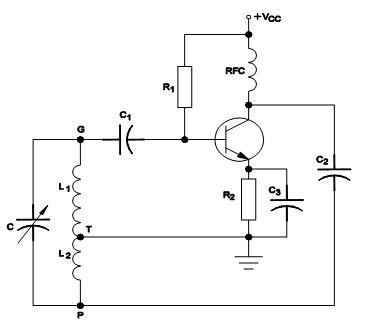
Q47. Which circuit is determined by the frequency of LC tank circuit? / LC टैंक सर्किट की आवृत्ति द्वारा किस सर्किट का निर्धारण किया जाता है?
Q48. Which configuration of transistor amplifier is most commonly used in electronic circuits? / ट्रांजिस्टर एम्पलीफायर का कौन सा कॉन्फ़िगरेशन सबसे अधिक इलेक्ट्रॉनिक सर्किट में उपयोग किया जाता है?
Q49. What in the current gain of a common – base amplifier? / एक सामान्य बेस एम्पलीफायर करंट गेन क्या है?
Q50. What is the value of RE if the voltage across it is 1.2 V and current flowing through it is 10mA? / RE का मान क्या है यदि इसके पार वोल्टेज 1.2 V है और इसके माध्यम से बहने वाला वोल्टेज 10mA है?
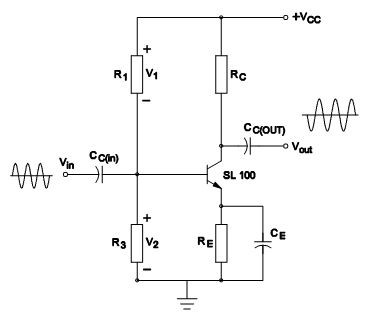
Electronic Mechanic 1st Year Module 9 Transistor Amplifier Oscillator and Wave Shaping Circuit
You got {{userScore}} out of {{maxScore}} correct
{{title}}
{{image}}
{{content}}